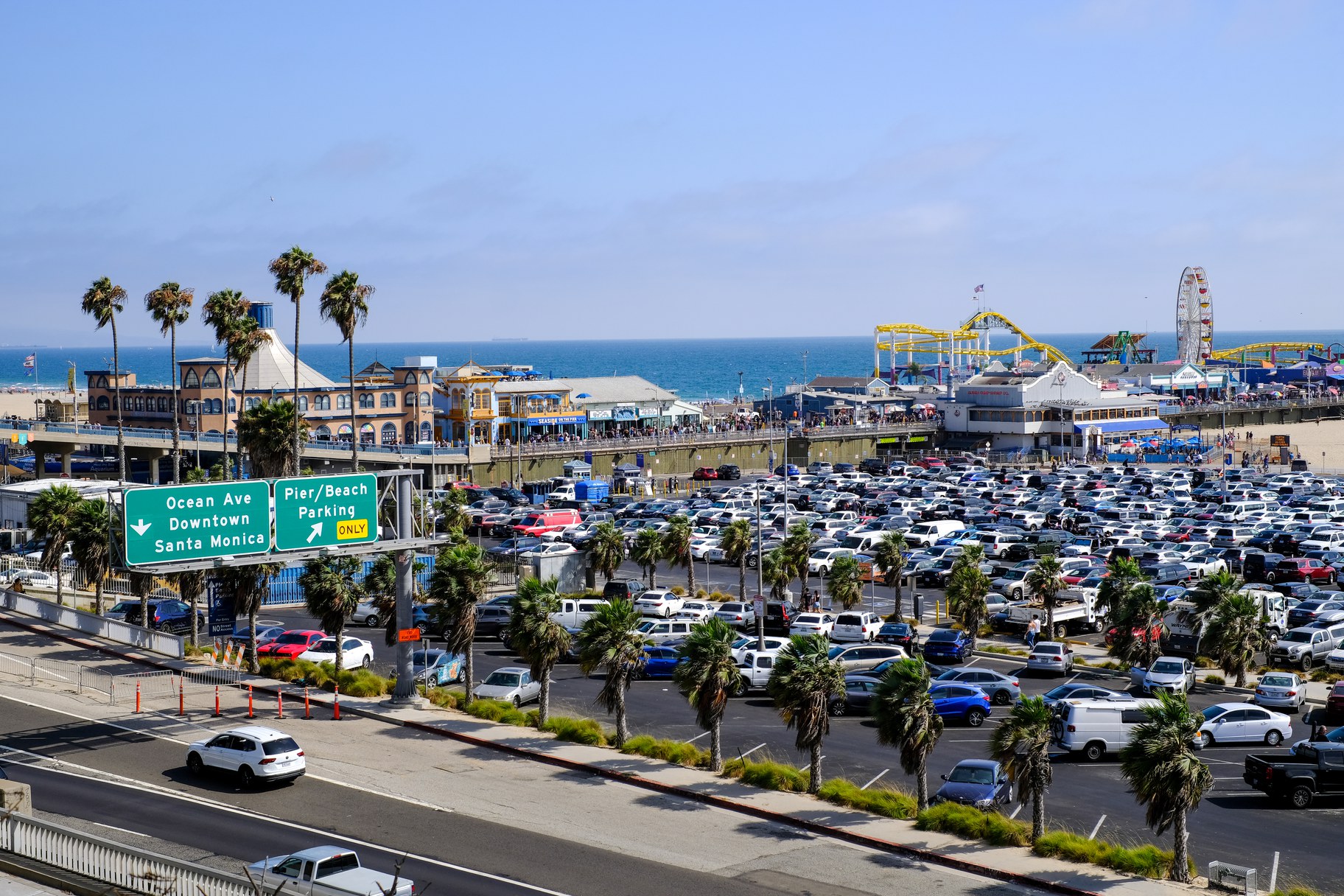Many Angelenos have noticed a major difference in the county’s air over the past few years. It’s hotter, more humid, less toxic. And Southern California’s marine layer is shrinking. But how much?
It’s hotter than it used to be.
Of course, it’s hotter almost everywhere. Heightened greenhouse gas emissions have warmed the planet by about 1.4 degrees Fahrenheit. But LA is warming faster than most places, averaging more than 4 degrees Fahrenheit higher than it was in the 19th century. We’re heating up more than almost anywhere else in the country.
That’s thanks to the urban heat island effect. Compared with rural areas, cities have more black asphalt, more buildings, more car exhaust, and less tree canopy. That makes cities better at soaking in heat from the sun.
Los Angeles is especially prone to this problem because of its notorious urban sprawl. “If we just keep replacing more and more open space with impervious stuff, we're going to keep increasing the geographic extent of anything that could contribute to the heat island,” says UCLA Urban Planning and Geography Professor Kelly Tuskin.
The problem is greatest in parts of Southern California that have seen more development, such as Santa Clarita, which over the past 50 years has transformed from a rural community into the third-largest city in LA County.

The parking lot is packed at Santa Monica beach, July 25, 2022. Compared with rural areas, cities have more black asphalt, more buildings, more car exhaust, and less tree canopy. That makes cities better at soaking in heat from the sun. Photo by Amy Ta.
It’s more humid than it used to be.
The air is wetter too, which means the heat index has increased even more. That difference is heightened in Los Angeles, which was a traditionally drier climate.
“Over the past 25 years in LA, the temperature increase was … about half a degree [Celsius]. But if you include that humidity effect, it is more like … 2 degrees,” says UCSD Meteorologist Guang Zhang.
That converts to about a 1 degree Fahrenheit rise in temperature that actually feels more like a 4 degree rise – just since the mid-90s.
Rising temperatures contribute to rising humidity. As the ocean gets warmer, it evaporates more. And as the air gets warmer, it’s able to hold more moisture. That’s especially bad news for night time temperatures, which have continued to increase as well, eliminating some of the overnight relief Angelenos rely on during heat waves.
The marine layer is disappearing.
June gloom might be the bane of beachgoers, but it also serves as California’s natural air conditioner.
But since the 1970s, about half of the marine layer has disappeared.
“Summertime clouds in Los Angeles have been rising -- that is, the base of the cloud is getting further away from the ground. But the tops of the clouds aren't rising. And that means the clouds are getting thinner and they're burning off earlier in the day,” says UCLA Geography Professor Park Williams.
Williams’ research has found that the average day in Santa Monica 50 years ago saw about four hours of marine fog. Today, it’s more like two hours. And even just two hours per day of direct sunlight has made a noticeable difference in our temperature.
“In a place like Santa Monica, where we've cut the … number of cloudy hours per day almost in half,” he explains, “this has caused about a 2-degree Fahrenheit warming.”
The air is cleaner.
Not every change to LA’s air has been bad. There is less air pollution than there used to be. A lot less. South Coast Air Quality Management District says ozone levels are at less than half of what they were in the 1950s.
USC Professor of Clinical Preventive Medicine Ed Avol has been studying air pollution’s effects on children for three decades, and experiencing them firsthand for more than seven. “I remember going to school here, when it was so smoggy, some days, they wouldn't let us out to play on the playgrounds,” he says. “Those days mostly are gone now. And so that really is a success story.”
A lot of that success was thanks to things like mandatory catalytic converters in the 1970s that drastically reduced car emissions, and requirements from the Clean Air Act that took effect in the 1990s.
But air pollution continues to plummet today with the adoption of electric vehicles and renewable energy sources. Between 2017 and 2018,, air pollution dropped 10%. In 2019, it dropped another 12%.
But after some of the worst fire years on record occurred just in the past five years, decades of progress has been undone by smoke pollution, according to new research from Stanford University. Future progress will depend on less fire and more renewable energy sources.
“Kids are growing up with better respiratory health than they did 10 or 20 years ago. There is documentable evidence that things are getting better,” says Avol. “But we are still in violation, under the Clean Air Act, of what the national and the state standards are set at to protect the public's health. It's not over. We're not done.”
